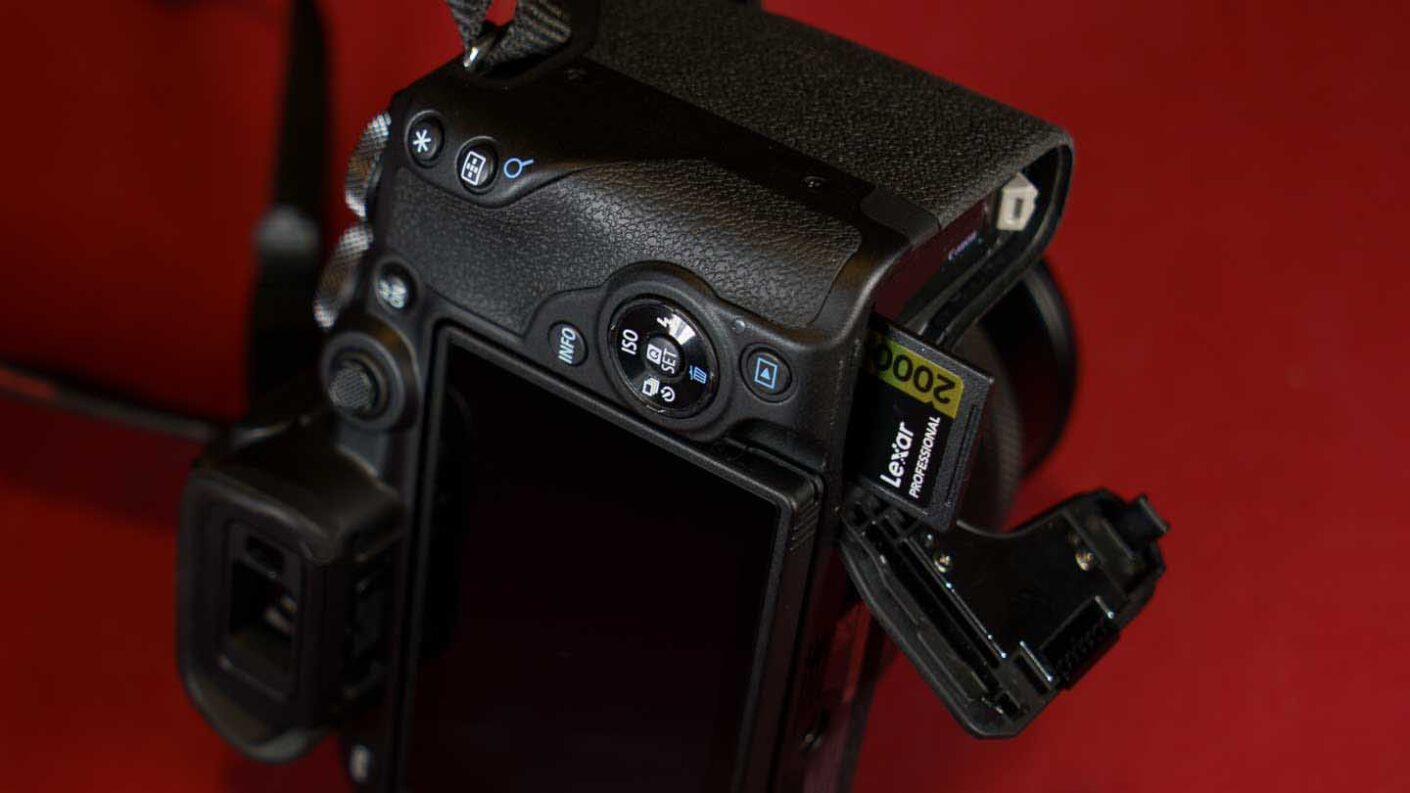Looks-wise the Canon EOS R10 is something of a mash-up of the Canon M50 Mark II and a small SLR like the Canon EOS 250D (AKA Canon EOS Rebel T7) with the addition of a joystick on its back. In fact, at 122.5 x 87.8 x 83.4mm, it’s smaller than the 250D/SL7 – which at launch was the smallest DSLR with a moveable screen and probably still remains so.
Plus, at 429g with memory card and battery, the R10 is lighter than the 250D, making it a highly portable camera that’s attractive for travel.
Despite that low weight and small size, the Canon R10 has a deep grip. That’s partly down to the fact that the lack of a mirror means the camera body doesn’t need to be as deep as an SLR’s. Consequently, the R10 feels a good pairing with the new RF-S 18-45mm F4.5-6.3 IS STM and RF-S 18-150mm F3.5-6.3 IS STM lenses.
With the exception of the menu button, the controls on the top and rear of the R10 are on the right of the camera, which combined with its low weight, means it’s easy to use one-handed.
According to the specification sheet, the Canon R10 is primarily made of magnesium alloy and plastic, but it’s not listed as weather-sealed.
Canon has given the R10 dual control dials, one embedded in the top-plate just behind the shutter release and the other towards the back of the top-plate above the thumb rest. This means that shutter speed and aperture can be adjusted quickly without the need to press a button while rotating a dial. Both are made from metal and have a knurled edge.
Just to the left of the rear dial, there’s a large exposure mode dial with all of the enthusiast’s options (PASM and Bulb) present, plus two customisable options, Canon flexible priority (Fv mode), Scene Intelligent Auto mode, Scene mode, Creative Filter mode and video mode.
On the back of the camera, there’s the usual navigation pad with four shortcut keys, plus a central Q/Set button. Pressing the Q button opens the Quick menu or confirms settings selections. There’s also an Info button for toggling through the different display options, an AF-on button and the AF point selection and auto exposure lock (AEL) buttons. The latter two buttons are on the top of the ridge that forms the thumb rest, so there’s a nice, clearly defined area for your thumb. The textured joystick sits to the left of the top of the thumb rest so it’s within very easy reach.
As with all of Canon’s recent cameras, the R10 has fully-integrated touch control so its possible to select and adjust parameters from the main and Quick menu with taps on the screen. It’s also possible to set the focus point and zoom into the image with a tap on the screen.
Further good news is that the 3-inch 1.04-million-dot screen is mounted on a vari-angle joint which means it can be moved into a position for easy viewing whoever the camera is held.




